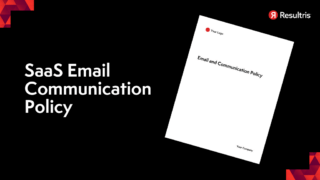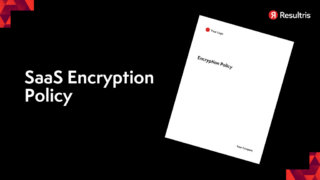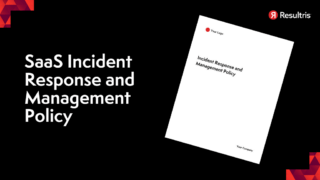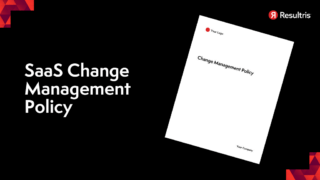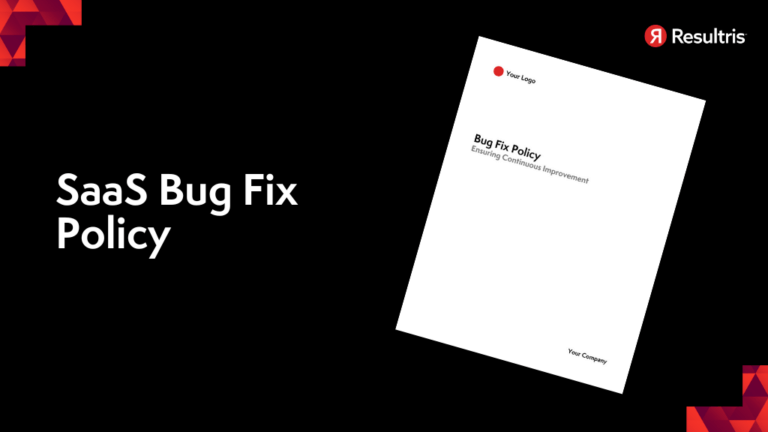
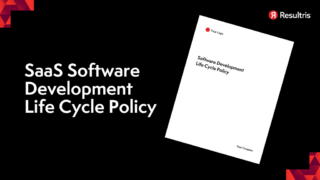
Written by: Tim Eisenhauer
Last updated:

When you’re navigating the world of Software as a Service (SaaS), you’ll inevitably encounter bugs. These pesky issues can disrupt your workflow, confuse your users, and even compromise your data. That’s where a solid SaaS Bug Fix Policy comes into play.
Understanding your provider’s policy can mean the difference between a minor hiccup and a major headache. It’s not just about quick fixes—it’s about SaaS Compliance and Security Best Practices.
So, let’s dive into the ins and outs of SaaS Bug Fix Policies. What should you expect, and what should you demand? Let’s find out.
After discussing SaaS Compliance and Security Best Practices, let’s dive deeper into SaaS Bug Fix Policies, examining its definition, the different types of bugs encountered, and its significance.
A SaaS Bug Fix Policy guides how a SaaS provider identifies, prioritizes, and resolves software bugs. It serves as a roadmap, clarifying the steps your provider takes when a flaw surfaces. Let’s not forget, bugs aren’t just pesky issues, they can result in lost productivity and compromised data.
An effective bug fix policy is pivotal to maintaining high-quality SaaS products. It depicts the provider’s commitment to error-free software, paving the way for robust user experiences. Remember, constant disruptions due to unresolved bugs can erode your users’ trust over time.
Critical bugs sit at the top of any bug fix priority list. They often halt the entire system, inhibiting users from performing crucial tasks. Revenues hang in the balance when these pests strike your SaaS application.
Major bugs, while slightly less devastating than their critical counterparts, still pose significant problems. They generally affect primary functionalities without shutting down the whole operation. The user can still proceed but in a limited manner.
Minor bugs disrupt non-essential features and rarely affect the smooth functioning of your SaaS application. While they’re more of a nuisance than a crippling issue, it’s still essential to address these bugs to ensure an optimal user experience.
Cosmetic bugs don’t impact functionality but mar the visual appeal or ‘look and feel’ of the application. They may seem trivial, but in a world where user experience can make or break a business, it’d be unwise to ignore even these seemingly insignificant glitches.
In tailoring your SaaS Bug Fix Policy, poignant considerations include your prioritization framework, timely response and resolution commitments. Let’s delve into these elements.
A well-structured prioritization framework streamlines bug-fixing processes. It’s essential to rank issues based on severity, user impact and business implications.
Severity assessments classify bugs by their threat level to your system. Critical bugs halt operations, while minor bugs and cosmetic issues pester users but don’t disrupt essential functions. Develop categorizations that reflect your product’s unique environment, helping your team to swiftly identify and repair high-risk issues.
Recognize the bugs that seriously affect the user experience. These could be major bugs impacting primary functionalities or minor bugs disrupting non-essential features. Incorporate user feedback in crafting your policy as it’s a valuable resource in understanding user impact.
Ensure to gauge the effects bugs might enact on your business operations. Discern disruptions to customer trust, product adoption, and overall reputation. Ensure your team understands these implications, adjusting their response accordingly.
Provide clear, achievable response time guidelines to your team. These guide the initial acknowledgment of a bug report. Cut out ambiguity, set expectations for your customers, enhance brand trust and deliver an above-average customer experience.
Pledge to specific resolution time commitments. This outlines how swiftly you’ll resolve different severity levels of bugs post acknowledgment. Similarly, communicate these commitments to your users to fortify their trust, improve satisfaction, and commitment to your SaaS product.
Note, the specificity of your bug fix policy can be a defining factor in your SaaS product’s success. Continuous refinement via feedback and experience remains key to maintaining a robust, efficient bug fix policy.
Taking the step to implement your SaaS Bug Fix Policy brings its own set of exciting challenges. Embrace these with confidence and strategy in order to successfully streamline the process.
Proper management of bugs begins with the implementation of robust bug reporting and tracking systems. Opt for a system that records all necessary data, applied in diagnosing the bug. This includes system logs, user actions leading up to the bug, and the impact area. To maintain an organized workflow, a priority tag marked by severity level is essential for every reported bug.
Significant to your SaaS Bug Fix Policy is the triage process. This phase encompasses reviewing, prioritizing, and assigning bugs for fixes. Divide bugs into distinct categories based on nature and severity, with each category assigned a resolution timeline. Establish a systematic way to prioritize these categories, with higher precedence given to bugs affecting a large number of users or critical application functionalities.
Navigating through bug fixes is not an isolated process. It involves keeping all stakeholders informed through proper communication channels.
Within your team, ensure that there’s a transparent flow of information. Status updates about the bug fixes should be made accessible to not only those fixing the bugs, but also the customer support team and other relevant departments. This collaborative approach promotes uniformity and enables synchronous upgrades.
Equally important is communicating with your customers. Be upfront about detected bugs and realistic about resolution timeframes. Inform them of known bugs, planned fixes, and when to expect solutions. Maintaining open lines of communication serves to build trust with your customers, minimizes frustrations and provides assurance that their challenges are being addressed.
Delving into the intricate aspects of on-ground implementation, let’s examine the specifics of version control, release management, and different testing procedures. Also, understand the divergence between hotfix and regular update cycles.
Maintaining an efficient version control system becomes pivotal in a SaaS business model. It’s a system that keeps a track of every modification in the code in a special kind of database. If a mistake is made, developers can turn back the clock and compare earlier versions of the code to rectify the bug and minimize disruption to all users.
Simultaneously, release management oversees the planning, scheduling, controlling and managing the project’s build through different stages and environments; including testing and deploying software releases. A structured release management process dramatically reduces the risks associated with deployment.
As for testing procedures, regression testing ensures that any modification or addition to the code doesn’t disturb the current functionalities. In essence, it’s all about confirming that your software continues to function without glitches after the bug has been rectified or when new updates are released.
User Acceptance Testing (UAT), on the other hand, involves the end users of the software, validating the product for real-world usage. It’s the final test before releasing the software to the public. Successful UAT is the green signal for your software to be deployed to production, ready to be used by customers.
Finally, it’s imperative to distinguish between hotfixes and regular update cycles. A hotfix is an immediate remedy, a quick fix to a bug that has a significant impact on the software. It’s a real-time rectification of bugs that calls for immediate deployment.
Regular update cycles, however, are for non-threatening bugs and minor improvements. They are usually scheduled and planned for periodic release. Juggling between the two is a vital part of a SaaS bug fix policy as it governs how immediate or scheduled bug fixes should be.
Bear in mind, while bug fixing is critical, a balanced approach that doesn’t stimulate disruption is just as paramount. After all, implementing a bug fix is not just about rectification but also about maintaining harmony between customers, your platform, and your team.
Efficient handling of bugs in a SaaS platform goes beyond process and technical arrangements. It also implicates how resources are managed, how priorities are balanced, and how bug fixes are integrated into the development cycle.
As resource allocation is one of the most critical decisions in any business, it becomes even more crucial when it comes to bug fixes. With a finite stock of time, expertise, and funds, striking the right balance can be a daunting task. Allocating more resources to bug fixes may lead to a more robust and reliable platform. For instance, assigning 30% of your development team primarily to debugging tasks ensures a consistent focus in this area.
It’s critical to find a balance between fixing bugs and developing new features. Both hold significant importance for maintaining an effective SaaS platform. Devoting too much time to one can hinder the progress of the other. Consider allocating specific days of the week, like Mondays and Tuesdays, to dedicated bug fixes, while the remainder can be spent on expanding features.
Incorporation of a robust CI/CD system is no less than a game-changer in the realm of bug fixing. It’s a proactive measure to ensure early detection and swift rectification of bugs. In a typical CI/CD setup, code changes are regularly integrated and deployed automatically. With this approach, bugs manifested from recent changes can be identified more promptly. It, therefore, mitigates risks and ensures a more smooth and reliable service for your users.
Shifting your perspective in line with customer interests won’t just enhance your SaaS bug fix policy. It’ll also empower clients while strengthening your brand’s image, trust, and loyalty.
Promote trust beyond words. Be transparent in your bug status reporting. Make the affected customers aware of bug detection, the steps you’re taking to rectify it, and provide a realistic timeline for a fix. Implementing a bug tracking system not merely expedites the process, but also fosters client relationships. Transparency can not only mitigate the direct impact of bugs, it also sends a robust message about your dedication to customer service.
Avoid disappointment – manage customer expectations effectively. Remember, it’s not always about rapidly patching up software bugs, but also about keeping the users informed and feeling valued. Provide regular communication updates on bug status, even if the fix is complex or time-consuming. Keep your users in the loop, and make sure they know you’re working diligently on solving their issues.
Consider going the extra mile when severe bugs hit your service. Offering compensation or credits is a considerate gesture that shows customers you take their inconvenience seriously. Bear in mind, it’s not just about the monetary value, but about acknowledging the inconvenience your customers have faced. Keeping a balanced, customer-centric approach to bug fixing can indeed enhance customers’ trust in your service and encourage long-lasting business relationships.
Assessing the potency of your bug fix policy introduces a robust framework for progress. Core to this endeavor are specific indicators and strategies that you’ll adopt for continuous betterment.
KPIs are quantifiable values representing how effectively a company achieves its business objectives. For a comprehensive SaaS bug fix policy, the following metrics matter most:
Time to resolution, the period from when a bug is reported to when it’s fixed, plays a key role. A shorter time suggests an efficient bug handling process. You can compile this data directly from your bug tracking system.
Customer satisfaction metrics, like the Net Promoter Score (NPS), provide insights into your customers’ perceptions regarding bug handling. They’re measured by customer surveys conducted after bug resolution. That said, the power of positive word of mouth highlights the importance of exceptional user experiences.
The recurring bug rate, referring to the ratio of bugs reported more than once, implies the effectiveness of previous fixes. A lower rate indicates a robust and exhaustive approach to problem-solving, reflecting the superior quality of your platform.
Maintaining a static approach is not conducive to growth. You’re encouraged to embrace continuous improvement strategies that embrace the following paths:
Take note: measuring the effectiveness of your bug fix policy is not the endpoint. It provides a platform for constant enhancement, thereby ensuring a seamless customer experience and long-term loyalty.
Let’s delve into the legal and contractual aspects integral to a SaaS Bug Fix Policy. These consider terms of service, contractual obligations, and potential liabilities – all pivoting on both the provider’s commitment to service and the customer’s rights.
When crafting a Service Level Agreement (SLA), it’s crucial to articulate commitments related to bug fixes. An SLA commits to remedying software bugs within a certain timeframe. For instance, critical issues might warrant a 24-hour response while minor glitches could have a 72-hour resolution period. Specifications like these ensure customers know what to expect, further instilling confidence in your services.
It’s equally essential to provide for instances where these commitments aren’t met. Possible remedies might include providing service credits or offering extended free trial periods. It’s about acknowledging potential issues up front – this boosts trust and displays a transparent, customer-centric approach.
Navigating liability considerations forms the backbone of a robust SaaS Bug Fix Policy. Establishing clear lines around liability can help protect your business against potential legal actions. For example, limiting your liability to the amount paid by the customer for the service can be an effective strategy to shield your company from financial damages.
Moreover, consider including a warranty disclaimer stating that your SaaS platform may not be completely free of bugs. This sets clear expectations and helps foster a mutual understanding, while still preserving your dedication to delivering a high-quality product.
Remember, a strong SaaS Bug Fix Policy shouldn’t be an afterthought. It’s an integral part of your service offering, helping keep customers satisfied and your company protected.
Outlining reliable SaaS bug fix management practices doesn’t just minimize bug impacts; it’s a testament to your dedication to product quality. Diving deeper into these practices, you’ll explore proactive bug detection strategies, post-mortem analysis for significant bugs, and cultivating a culture of quality.
A reactive approach to bugs can turn situations chaotic. Proactive bug detection strategies, on the other hand, prevent bugs before they reveal themselves, ensuring seamless customer experiences. Employing robust testing procedures, implementing code review practices, and leveraging automated bug detection tools stand as such strategies. For instance, Test-Driven Development (TDD) encourages writing minimal code for tests to pass, forestalling potential issues.
Retrospective analysis after the resolution of significant bugs deduces key lessons, informs strategies to prevent recurrence, and optimizes current processes. Conducting a detailed post-mortem analysis for major bugs involves identifying what happened, the bug’s impact, steps taken for resolution, and improvement plans. For example, suppose a bug led to an hour of system downtime. In the post-mortem analysis, you’d outline the bug’s cause, the corrective measures undertaken, and the actionable to avoid future occurrences.
While structures and processes form the backbone, fostering a quality culture is quintessential to exceptional SaaS bug fix management. Encourage teams to take ownership, prioritize quality in their tasks, and reward individuals for identifying and resolving bugs proficiently. Google, for instance, follows an approach called ‘Testing on the Toilet’, distributing testing tips and techniques via flyers in restrooms, instilling quality-centric thinking among engineers.
You’ve now got a solid grasp on how a customer-focused SaaS Bug Fix Policy can enhance your platform’s effectiveness. Improving customer experiences, promoting transparency in bug reporting, and managing expectations are all critical components. Remember, it’s about measuring policy success with KPIs such as Time to Resolution and Customer Satisfaction Metrics.
Don’t forget the importance of proactive bug detection and post-mortem analysis. These practices, coupled with a strong testing regime and automated bug detection tools, will help you learn from past mistakes and prevent future ones.
Finally, fostering a culture of quality is key. It’s not just about fixing bugs; it’s about rewarding quality work and making it a team priority. By doing this, you’ll not only improve your software but also boost your team’s morale. So, go ahead and revamp your bug fix policy, keeping your customers at the heart of your strategy.
Disclaimer
Please note that the information provided in this blog post is for informational purposes only and does not constitute legal advice. We are not lawyers, and reading this content does not create an attorney-client relationship. For legal advice specific to your situation, please consult with a qualified attorney.

